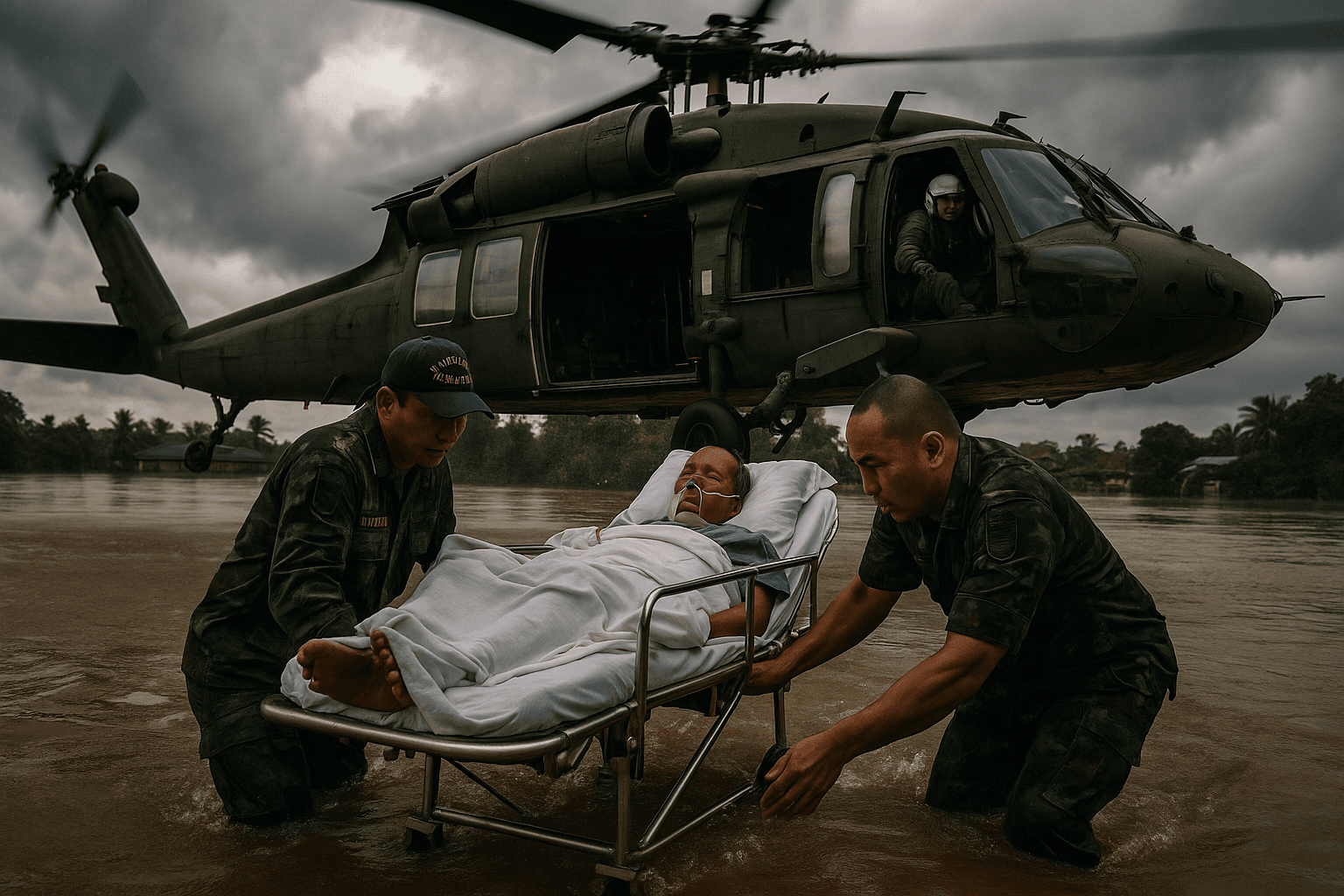Thailand airlifts patients as southern floods kill thirty three
Severe flooding across southern Thailand has killed at least 33 people and inundated hospitals in Hat Yai, forcing authorities to use helicopters to evacuate critically ill patients. The scale of the disaster, which is affecting nine provinces and parts of neighbouring Malaysia, is straining military and civilian relief capacity and raising urgent questions about preparedness and regional cooperation.

Floodwaters continue to surge through southern Thailand as authorities mount a large scale rescue and relief operation after heavy seasonal rains inundated towns and countryside. At least 33 people have died and tens of thousands have been displaced, with hospitals in the commercial hub of Hat Yai overwhelmed and some facilities forced to move critically ill patients by helicopter to safer locations.
The Thai military and navy are leading the response, deploying helicopters, boats and trucks to deliver food, medicine and drinking water to isolated communities. The navy has sent the aircraft carrier Chakri Naruebet to the area to provide additional helicopters, medical teams and field kitchens, while naval and army personnel coordinate evacuations and search and rescue missions. Rescue teams are racing against forecasts that warn of more heavy rain in the coming days.
Government updates indicate the floods are affecting nine southern provinces and have spilled across the border into parts of Malaysia. Reuters reports that more than 2.7 million people and nearly 1 million homes have been impacted, underscoring the scale of the emergency. Local officials say entire neighbourhoods remain underwater and roads and bridges have been damaged, complicating efforts to reach the hardest hit areas.
Hat Yai, a city that serves as a commercial and transport hub for southern Thailand, is among the worst affected. Flooding of medical facilities there has forced rapid evacuations of intensive care patients and those requiring continuous treatment, exposing vulnerabilities in health system surge capacity. Field hospitals being set up by military medical teams are expected to handle routine trauma and infectious disease screening while inundated hospitals are stabilized or evacuated.

The human toll is immediately visible in displaced families sheltering in schools and community centres, while the economic impact is likely to widen as transport links and markets are disrupted. Agriculture, fisheries and small businesses in the predominantly rural south face losses that could persist well beyond the end of the rains. Cross border effects in Malaysia mean that coordination between the two governments will be important for managing refugee flows and shared river systems.
The heavy military presence reflects a long standing pattern in Thailand where the armed forces are a key resource in domestic disasters. The scale of the operation also highlights broader challenges facing the region as extreme rainfall events become more frequent and intense, stretching emergency services and testing infrastructure resilience.
Immediate priorities for authorities are life saving rescue work, restoring safe access to medical care and ensuring clean water and sanitation to reduce the risk of disease outbreaks. With weather officials warning of additional downpours, relief agencies are bracing for new waves of displacement and for an extended recovery period that will demand sustained logistical support and, potentially, international assistance.

